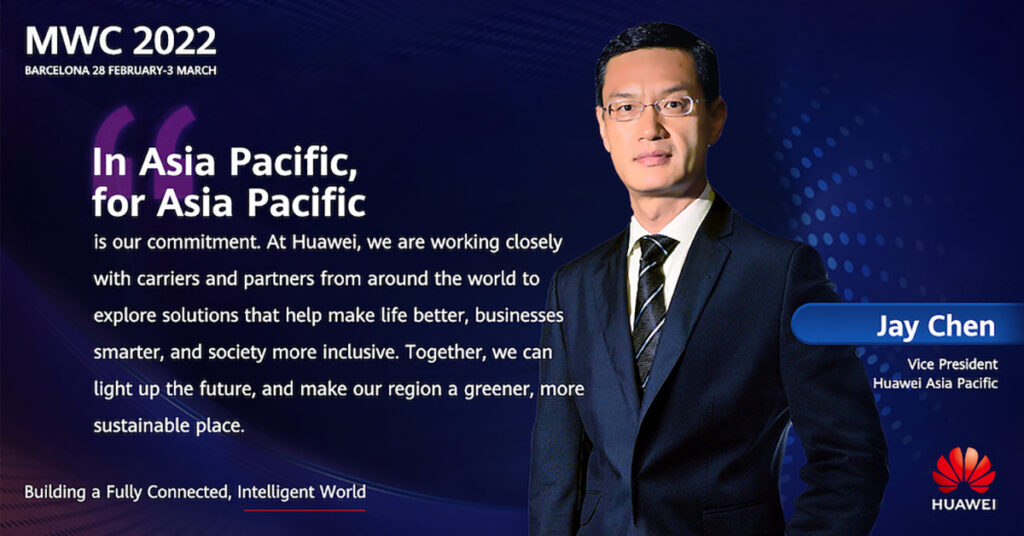This year’s Mobile World Congress (MWC) happening in Barcelona, Spain may be displaying the latest smartphones and gadgets. For Huawei, however, it’s an avenue to present its timely digital products and solutions for homes and major industries.
As the company showcases its products and solutions at stand 1H50 in Fira Gran Via Hall 1, it releases its “GUIDE business blueprint and innovative solutions focusing on digitalization and carbon neutrality for the future of ICT.”
The global provider of ICT infrastructure and smart devices vows at the online media roundtable to empower the green and sustainable future of digital economy in the Asia Pacific region.
Carbon reduction and digital economy
According to forecasts, over 50 percent of global GDP will be digitalized in 2022. Huawei’s rotating chairman Guo Ping explained that existing theories and architecture continue to hit severe bottlenecks, and the industry must reshape the technological paradigm to achieve digital sustainability.
The company has committed to “make technology and nature live together,” and has continued to invest in reducing carbon emissions, increasing the use of renewable energy, promoting circular economy, and guarding nature with technology.
“Connectivity density and computing power determine the strength of the digital economy, but it should also maintain long-term vitality. So, we need to consider a new dimension, carbon reduction,” Guo said.
The company currently adheres to “More Bits, Less Watts” concept and has committed to making its products 2.7 times more energy efficient through breakthroughs in theories, materials, algorithms, and such. Its third-generation Massive MIMO products fully utilize the multi-antenna technology to improve energy efficiency by 30 percent compared with peer products.
To help create a greener and more sustainable digital world, Huawei will increase investment in sustainable green solutions, leveraging clean power generation, electric transportation, and smart energy storage, to support the Asia Pacific region’s goals of cutting carbon emissions, promoting renewable energy, and contributing to a circular economy, said Jay Chen, vice president of Huawei Asia Pacific.

A report from AlphaBeta, a Singapore-based strategic economic consultancy, shows that a technology-driven economy could help mitigate the impact of the COVID-19 pandemic and recover the country’s economic losses.
It states that if fully leveraged by 2030, the Philippines can foster a digital economy that can raise P5 trillion or $101 million in economic value by 2030. This is equivalent to 27 percent of the country’s GDP in 2020 alone.
In Asia Pacific, for Asia Pacific
“At Huawei, we are working closely with carriers and partners from around the world to explore solutions that help make life better, businesses smarter, and society more inclusive. We’d also love to share how our ICT technology is helping make the world a greener, more sustainable place. Together, we can light up the future,” said Jay Chen.
To support the digital ecosystem in Asia Pacific, Huawei in 2021 has announced that it will invest $50 million to develop 500,000 digital talents for Asia Pacific in the next five years, and invest $100 million over three years to cultivate the startup ecosystem in the region, including in the Philippines.
